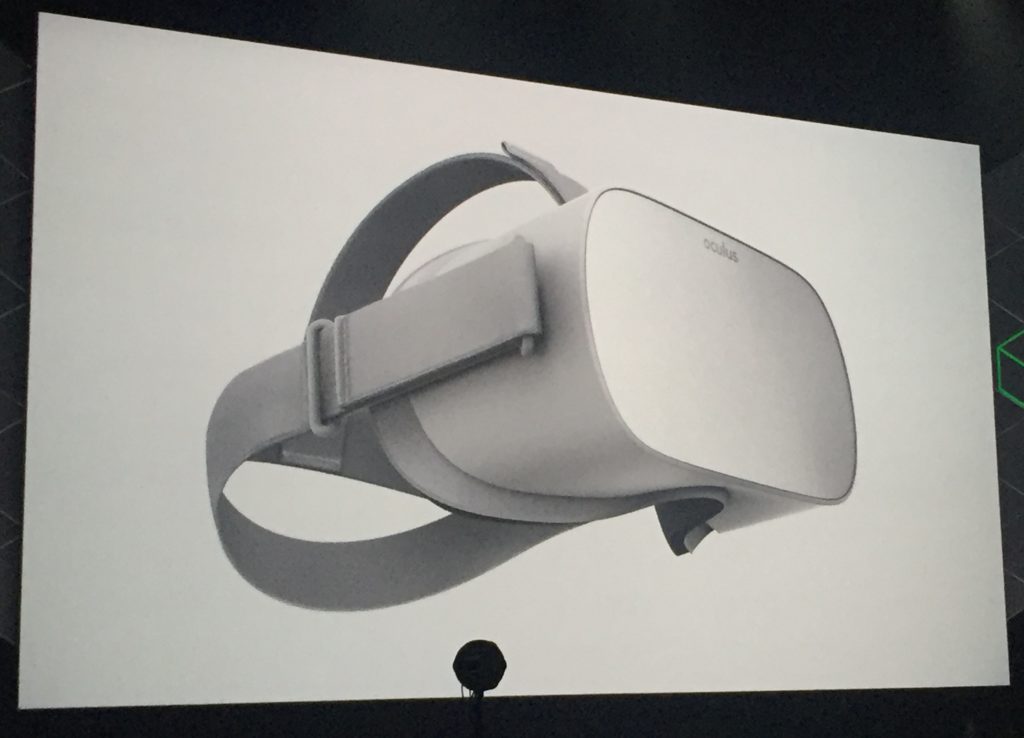
Facebook’s Tech Chief on the New Oculus Virtual Reality Headset
Facebook’s Tech Chief on the New Oculus Virtual Reality Headset https://csuiteold.c-suitenetwork.com/wp-content/uploads/2017/10/facebooks-tech-chief-on-the-new-oculus-virtual-reality-headset-1024x738.jpg 1024 738 C-Suite Network https://csuiteold.c-suitenetwork.com/wp-content/uploads/2017/10/facebooks-tech-chief-on-the-new-oculus-virtual-reality-headset-1024x738.jpgHe also talks about augmented reality and new Oculus head Hugo Barra.
Facebook is continuing its push to make virtual reality mainstream.
During the company’s annual Oculus Connect developer conference this week, the social networking giant unveiled its new $200 Oculus Go VR headset that, unlike many rivals, doesn’t require a personal computer or smartphone to operate.
Facebook CEO Mark Zuckerberg pitched the new headset as the “sweet spot” between the company’s $400 Rift headset and the mobile phone-powered Gear VR headset that Facebook sells in partnership with Samsung. Facebook hopes the cheaper headset will convince more people to try virtual reality.
In this edited interview with Fortune, Facebook’s chief technology officer Mike Schroepfer discusses the new Go headsets, his views about VR’s cousin technology, augmented reality, and the impact of relatively new Oculus chief Hugo Barra.
Fortune: Why did it take this long for Facebook to unveil a VR headset that doesn’t need to be tethered to a phone or computer?
Schroepfer: I think that the first couple years of VR is just getting VR to work. Just getting Touch [motion controllers] to work, getting the software to work well on the Gear VR, and getting developers to develop great experiences.
Get Data Sheet, Fortune’s technology newsletter.
What will be the quality of the visuals on the new Go standalone headset be like compared to current smartphone-powered headsets?
For the Oculus Go, think of it as a similar experience from a graphics standpoint to the Gear VR, because it’s a similar kind of platform—but with our latest lenses. The sharpness of text and a bunch of other things will be quite a bit improved. But in terms of the graphics, for the developers [building apps] for the Gear VR, this would be similar.
Are you seeing more of a demand from companies interested in VR? [Facebook also debuted a $900 Oculus Rift bundle for businesses that comes with a warranty and customer support.]
We’re seeing a lot of companies wanting to use Rift. There are many different projects where people are saying, “Okay, this is the best tool around to visualize something.” “I’m an architect, I want to share a model of the building with my client.” We can pay people to build one of those toothpick things, print some stuff out, or I can bring them into a 3D model where I can take the roof off and basically be like, “See, this is what the living room looks like.”
I’ve talked to people who build simulators for F1 racing cars and they spend $2 million building it. And then they see this $600 headset or $900 [with accessories] and they say, “Cool, now I can buy a thousand of them for the same cost as one of these.” I think it’s this massively disruptive thing. I’ve heard of people doing this for all sorts of different uses—bus drivers, flight—anything that requires simulation. People have used it for first responder training so they can simulate what…





